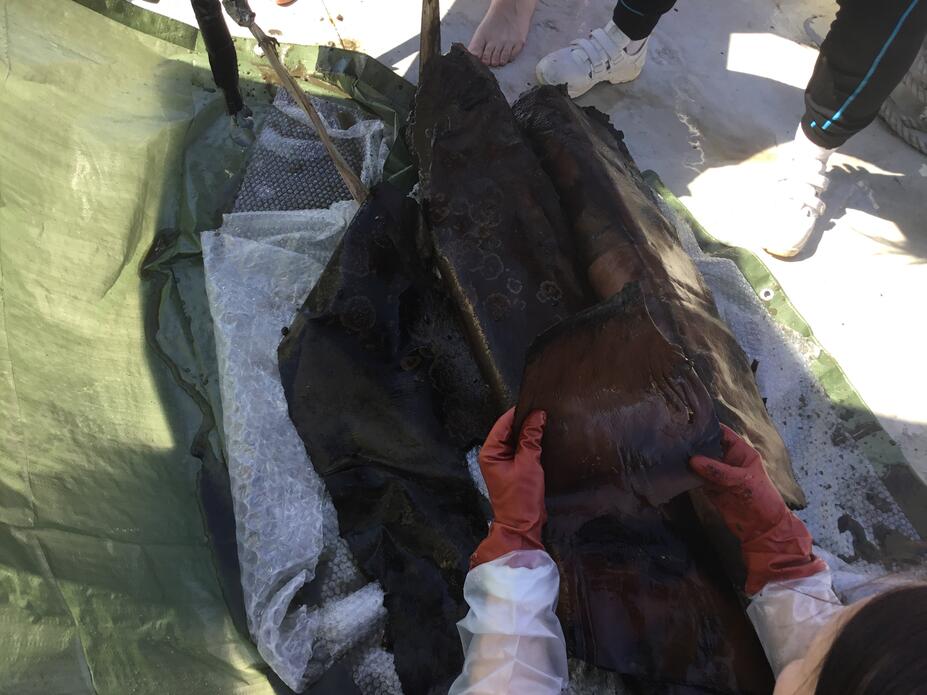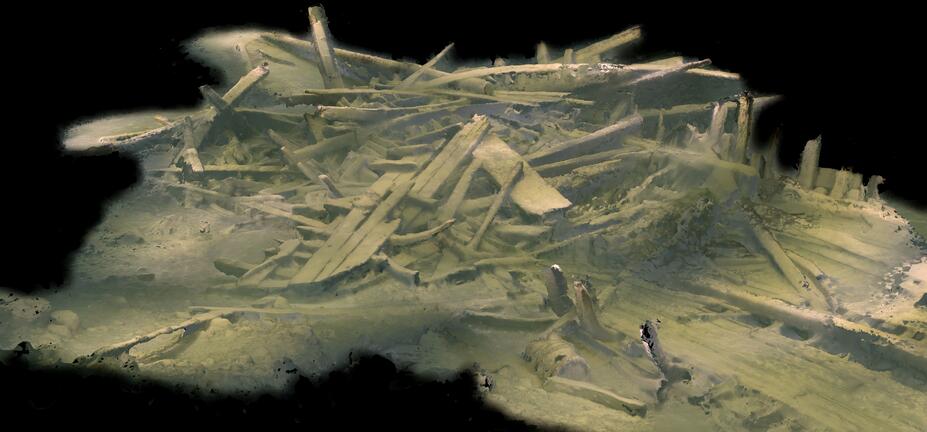The manufacturing process of Russian leather was a closely guarded secret. It was mainly made from cowhide and tanned using birch tar, which caused its characteristic tarry smell. The tanning made the leather basically indestructible. The scent is still detectable in hides that have been at the bottom of the sea for up to 300 years.
On the one hand, Russian leather was a mass-produced product used for military boots and saddles, while on the other, it was an elite product used to make the finest leather goods such as leather-bound books, bags, belts, footwear and boxes, as well as to upholster furniture. In Italy, Russian leather was used to wallpaper entire rooms. Russian leather wallpaper could not be destroyed by insects. Finished Russian leather spread a sophisticated scent that inspired Coco Chanel in the 1920s to develop Cuir de Russie (Russian Leather), a high-quality perfume designed especially for women who smoked.
Russian leather came in red and black. These types were further divided into subcategories. The red leather was of the highest quality and used for purposes such as bookbinding. The black variant was used for shoes and boots, and it was in high demand in Russia in the 18th and 19th centuries. The manufacturing process of Russian leather was a secret process that other countries attempted to spy on. However, the rest of Europe did not know how to make it even in the 1840s.
The leather played an important role in Russian exports. Large quantities of it passed through the Gulf of Finland already in the 17th century. The peak years were in the 1660s. Russian Leather was brought to Narva along rivers from deep within Russia. In 1696, plans were made to build a factory to manufacture Russian leather in Narva. The plant was never completed, however, as evidenced by the fact that the export volumes collapsed around the same time.
The Great Northern War disrupted all trade, including that of Russian leather. The most important destinations were Germany, the Netherlands (especially Amsterdam), Britain (especially London) and Italy (especially Genoa). In the Baltic Sea, the leather always moved from east to west. Russian leather was also exported to Italy via Russian ports on the Black Sea after Russia seized them in 1783.
In the holds of ships, Russian leather was carried in rolls containing varying numbers of hides. The rolls were tied into bales. There is interesting information about the composition of the bales and rolls in guidebooks on 19th century Russian trade. The composition of the rolls gives a rough indication of the city or country to which the rolls were headed. Small and thin hides were the most desirable. They came from young animals and were made of supple leather, which was exported especially to Italy.
According to customs records from the Sound, Russian leather moved in especially high volumes in the 1760s. This was also reflected in the fact that there was a larger number of shipwrecks of ships carrying Russian leather. Russian leather was sold in shipwreck auctions in Helsinki in 1746, 1749 and 1768, for example. In 1746, the yacht Maria, captained by Jacob Staugard, got shipwrecked at the island of Jussarö. Nearly 50 rolls of leather were recovered and auctioned.
Another indication of the importance of the coveted commodity is the fact that at least one islet was named after a ship carrying Russian leather that got shipwrecked near it. The islet is called Juktenskobben, where a University of Helsinki shipwreck project and the Finnish Heritage Agency have conducted research and recovered two rolls of Russian leather. They were examined by the laboratory of the Finnish Heritage Agency.
The high demand for small hides could also be seen during auctions. The auction house received the highest hammer prices for small hides. At leather auctions in the Helsinki area, hides were being bid by, among others, people working with horses such as saddlers, cobblers and cavalry officers. They were also popular among bookbinders.
Ships carrying hides also got shipwrecked in the eastern Gulf of Finland. In 1744, the galliot Jungfrau Anna burst a leak and was washed ashore at the Beryozovye (Koivisto) islands. The crew abandoned ship, but the locals took Russian leather from the ship and hid it in the forest. This resulted in harsh sentences, even the death penalty, which in at least one case was reduced to running the gauntlet. In 1778, the Dutch ship Catharina die Grote was shipwrecked near the island of Haapasaari. When the cargo was being rescued, a large amount of Russian leather went missing. The perpetrators were fined. However, the penalties were more lenient, probably because more Russian leather was being transported and there were consequently more shipwrecks.
Literature
Borissow, C. I.: The Commerce of St Petersburg, with a Brief Description of the Trade of Russian empire. London 1819.
Huhtamies, Mikko: A second-hand shipwreck market, see https://researchportal.helsinki.fi/en/publications/a-second-hand-shipwreck-market-salvage-auctions-in-mid-eighteenth(Link leads to external service)



